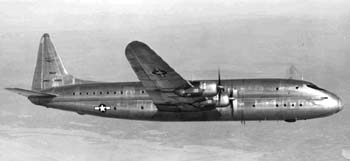The 1948 Berlin Crisis: Talk of War
Three years
after the Nazi surrender, divided Germany continued to be a major trouble
spot. Friction between Stalin and the three Western Allies over the
governance of the defeated nation grew more intense as 1948 progressed,
and secret military intelligence estimates exacerbated war worries in
the Pentagon. In early March, General Lucius Clay notified Army Intelligence
that he had received indications that the Soviets were preparing for
armed conflict, sending the Washington military establishment into an
alert posture.
The Soviets
reacted with anger to signs that the western Allies were planning to establish
an independent government in the Western Zone of Germany. At the end of
March, the Soviet representative walked out of a meeting of the Allied
Control Council. A few days later, the Soviets notified the other powers
that Westerners attempting to travel to Berlin, deep inside the Soviet
Zone, would be required to pass through Soviet inspections. The next day,
some rail lines into Berlin were shut down as a token of Soviet resolve.
Air Force Chief of Staff Spaatz notified the Air Staff that he wanted
Alaskan air defenses augmented immediately, and issued a top secret order
that Alaskan radar stations were to go on 24-hour watch.
The US
Air Force stepped up supply deliveries to Berlin in the first few days
of April, and the Soviets countered this with intimidation tactics.
On April 5, a British airliner on a scheduled flight within one of the
defined air corridors to Berlin was suddenly buzzed head-on by a Soviet
Yak-3 fighter. The fighter streaked past the transport, turned, then
made another pass at the airliner's nose. The aerial game of chicken
ended in tragedy. The two planes collided and went down, killing ten
passengers and crew in addition to the Soviet pilot.
The US
detonated the sixth atomic bomb in a test called "Sandstone X-Ray"
on April 14 -- the first nuclear test in nearly two years.
When Navy
Secretary John Sullivan told a Senate hearing that unknown submarines
had been sighted in the Pacific, a Washington newspaper screamed that
"Russian Subs Prowl West Coast Waters."
On June 7, the Western Allies announced that a West German government would be set
up within a year. The Soviets reacted by pulling out of the four-power
administrative commission for Berlin.
The Western
Allies announced replacement of the German Reischsmark with a new currency,
the Deutschmark, on June 18th. The Soviets refused to recognize the new
money. It was a de facto admission that Germany would be economically
as well as politically sliced apart.
The post-war
Four Power government of Germany was dead. As of midnight on June 20,
all traffic into the Soviet Zone of Germany was halted by hostile Russian
border guards. Three days later, the Soviets began a blockade of the
isolated city of Berlin.
On June 28,
representatives of the US State and Defense Departments met with the Joint
Chiefs of Staff to discuss the possibility of war. President Harry Truman
and the National Security Council believed that Stalin and the Politbureau
did not want war, but mulled over a proposal by General Clay to send armed
convoys through the blockade as a test of Soviet will. Would the Russians
allow them to pass? Truman was in the middle of a tough reelection fight
against Republican Thomas Dewey, and decided that air power, and aerial
supply of Berlin, were less risky alternatives. He also resisted pressure
from Defense Secretary Forrestal to transfer custody of nuclear weapons
from the Atomic Energy Commission to the Pentagon.
On July 16,
the US Air Force and the British Air Ministry announced the deployment
of two US B-29 medium bomber groups to England. The next day,
thirty B-29s of the 28th Bomb Group flew to RAF Scampton, and on the 18th,
thirty more B-29s deployed to RAF Lakenheath. On the 20th, 16 F-80 Shooting
Star jet fighters from Selfridge AFB in Michigan flew to Germany by way
of Iceland and the UK.
The same
day, a strange, Zeppelin-like thing was seen in the sky over Arnhem, in
the Netherlands.










